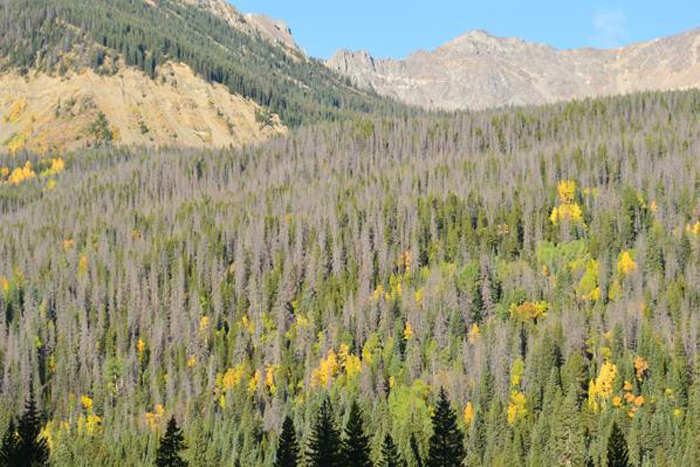Forests Recover Quickly After Bark Beetles Attack

SAN FRANCISCO — A forest ravaged by the "red hand of death" — also known as a bark beetle attack — recovers quickly with little ecosystem damage, scientists said here today (Dec. 9) at the annual meeting of the American Geophysical Union.
The potential effects of massive tree die-offs in Western forests have been a concern since a sudden uptick in bark beetle attacks in the late 1990s. A species called the mountain pine beetle is one of the primary culprits, leaving large swaths of forest dying of a fungus carried by the tiny insects. Beetle outbreaks have hit more than 30 million acres in the western United States and Canada, according to the National Science Foundation.
Forests look awful after a beetle attack, but the wound isn't as terrible as it looks, according to two separate studies by researchers from the University of Wyoming and the U.S. Forest Service (USFS).
In Wyoming's Medicine Bow National Forest, botanist Brent Ewers of the University of Wyoming examined whether tree deaths sent more water into streams (because there is less vegetation to suck up precipitation), as well as released additional carbon and nitrogen from dead, decaying trees. Even when up to 80 percent of trees were killed by beetles, Ewers and his colleagues saw little evidence of these worrisome effects. [Alien Invaders: Photos of Destructive Invasive Species]
"Even though bark beetles have an enormous visual impact, the forest is resilient to the attack," Ewers told LiveScience.
And in Colorado's Front Range, in the Rocky Mountains above Denver, pine beetle infestations don't add extra nitrogen to waterways that eventually drain to the city, according to a study led by USFS research scientist Chuck Rhoades.
It turns out that because beetles don't kill all the trees at once, the survivors gobble up extra water and nutrients freed up by the fatalities, both studies found. In four different study sites, 40 percent of older trees grew two times faster in the years after bark beetles munched through the forest, Rhoades and his colleagues found. In Wyoming, the understory plant cover — which includes new tree seedlings, shrubs and flowers — more than doubled, Ewers found.
Get the world’s most fascinating discoveries delivered straight to your inbox.
Turns out that both the surviving trees and new growth can eat and drink all the free water and fertilizer in the forest. On the small scale, there may be local increases in stream flow, carbon or nitrogen, but overall, there is very little change after a bark beetle infestation, Ewers said.
"Even though the bark beetle visual impact is really impressive and striking, there's many things going on in that forest that makes it resilient to the attack, and so those compensating mechanisms result in little impact in what the ecosystem itself is doing," Ewer said.
Email Becky Oskin or follow her @beckyoskin. Follow us @livescience, Facebook & Google+. Original article on LiveScience's OurAmazingPlanet.



